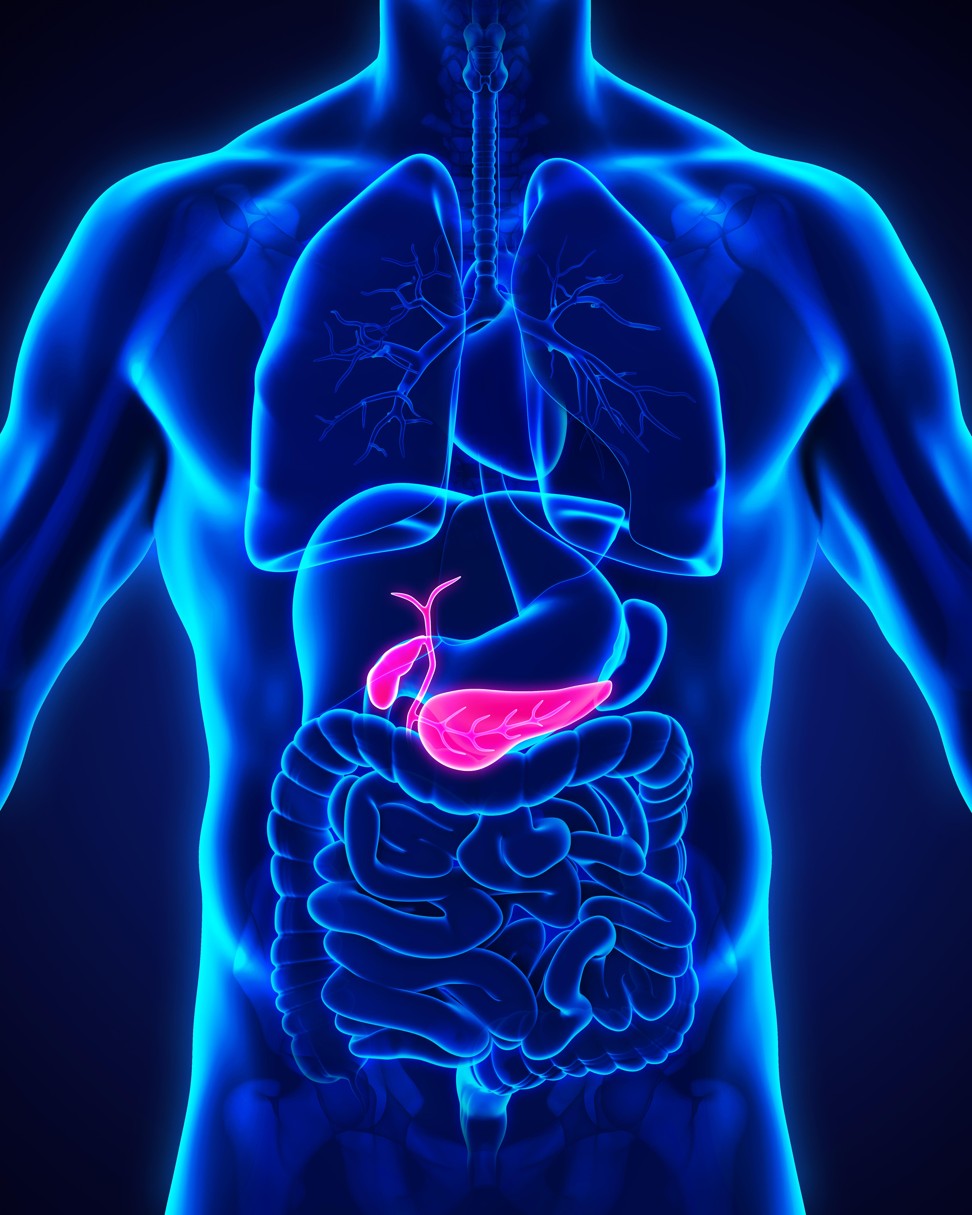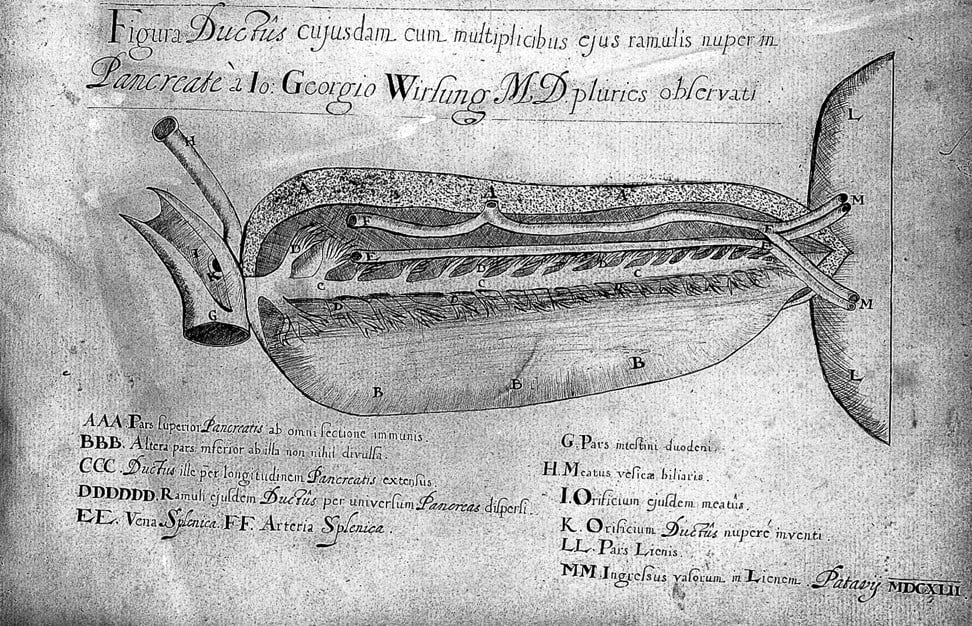
The pancreas: all you need to know, from how it works to the best ways to keep it healthy
It’s not a large organ, but it’s a vital part of the human digestive system, producing insulin and other essential enzymes and hormones that help break down the food we eat
The pancreas, in the upper part of the abdomen, behind the stomach, is protected by the ribs to the rear. It isn’t a big organ – it’s around half the size of its owner’s hand – but it is a very important one.
“The most important digestive juices don’t come from the stomach, but from the pancreas. People can live without taking any medicine after having their stomach removed, but once the pancreas is gone, replacement enzymes must be given whenever someone eats anything,” says Dr Paul Ng, a Hong Kong-based specialist in gastroenterology and hepatology.
Tragedies spur woman to set up the Hong Kong Cancer Fund
Ng explains that the pancreas is a factory that produces exocrine secretions, known as pancreatic juices, that are released into the gut.
They are mostly enzymes, and include amylase, which digests starch; protease (which digests protein); lipase (which digests fat); DNase (which breaks down DNA); RNase (which does the same for RNA); gelatinase (which breaks down gelatin); and elastase (which breaks down collagen).

The pancreas also performs an endocrine function, delivering important hormones into the bloodstream, including insulin, which lowers blood glucose, and glucagon, which raises it. Insulin forces excess sugar towards muscles and other cells to avoid the damage a sugar overload can cause. Glucagon, on the other hand, is produced when blood sugar is too low, and prompts the liver to release sugars.
Pancreatitis is a nasty condition – it is triggered by any sort of damage to part of the pancreas
It is a clever mechanism – but how does the pancreas know how much insulin to release at a given time and in what amounts? It has taste buds that are similar to those in the tongue. These taste receptors “taste” how sweet foods are and release the appropriate amount of insulin to support a balanced reaction to the resultant glucose.
The word pancreas comes from the Greek, pankreas; pan meaning “all,” and “kreas”, meat. So, pancreas literally translates as “all meat”, which describes its fleshy, rubbery appearance and may explain why in many parts of the world, people consider the pancreases of various animals as valuable.
The Chinese used ground dried pig pancreas as a medicine to treat diabetes more than 2,000 years ago, Ng says. And some cultures value certain animals’ pancreases, usually that of a calf or lamb, and call this culinary treasure sweetbread.
Early physicians could not explain the function of the pancreas and considered it little more than a shock absorber – on account of its rubbery texture and its location: they believed it was there to protect the stomach from the spine.
In the mid-17th century, German anatomist Johann Georg Wirsung established that the pancreas is connected to the duodenum via a small duct; in 1642 he named this the “duct of Wirsung”. Later it became known as the pancreatic duct.
Breakthrough blood test detects early signs of eight cancer types
The function of the pancreas was not established until the very late 19th century and the beginning of the 20th century when some extraordinary advances were being made in the field of chemistry.
It was at this point that scientists came to understand that the juices the pancreas produced aided digestion. They realised this digestive ability was based on “ferments” which they noticed were present in these secretions. Today we know those ferments as enzymes.

Slowly it was understood that these enzymes break down food particles into molecules so that they can be absorbed by the intestines – until 1902, it was believed that the brain did that job.
Only in the last century have we begun to understand the pancreas well – and much of that knowledge is thanks to the work of scientists in the first half of the 20th century.
So which illnesses can affect this clever little organ? Pancreatitis and pancreatic cancer, says Ng, who notes that “both can cause severe pain in the stomach region and sometimes back pain.
“Pancreatitis is a nasty condition – it is triggered by any sort of damage to part of the pancreas, which then leads to a leak of pancreatic juice causing the digestion of one’s own body – because, remember, the pancreas has the wherewithal to digest protein, fat, DNA, RNA, collagen and more.”
A person can survive without a pancreas but only, says Dr Ng, with “pancreatic enzyme replacement and insulin injections” to do the jobs it does naturally.

Sometimes, he says, “after a bad episode of acute pancreatitis, or after very prolonged chronic pancreatitis, the pancreas is ‘eaten away’ by the process and becomes absent functionally”. And sometimes the pancreas must be surgically removed – in the case of cancer, for example.
Pancreatic cancer is among the most common types of cancer in both men and woman. There are more than 380 new cases each year in Hong Kong – and around 53,000 in the United States.
The mortality rate of pancreatic cancer is often high. Symptoms may include central or upper abdominal pain, weight loss, jaundice, steatorrhea (fatty stool) or newly developed diabetes. In most patients, symptoms do not appear until later stages of the disease, when it is often too late to treat or control.
Four simple and effective ways to reduce colorectal cancer risk
Oddly, patients with rarer forms of pancreatic cancer – which account for about 5 per cent of cases and include neuroendocrine tumours (as opposed to the more common adenocarcinomas) – often have a more favourable outlook.
Risk factors for pancreatic cancer include age, being male (it has claimed the lives of, among others Luciano Pavarotti, Steve Jobs, and Patrick Swayze), smoking and a history of obesity and diabetes.

The pancreas, warns Ng, “is not a fan of alcohol: sometimes we see patients die from severe acute pancreatitis after bingeing. Toxins such as certain mushrooms and medicine can also trigger pancreatitis.
“Gallstones sometime get stuck near the pancreas causing pancreatitis, too. Uncontrolled diabetes and high triglyceride blood levels (cholesterol) can cause pancreatitis too.”
This clever, compact organ has a key role to play in your health, so remember to take care of it, too.

